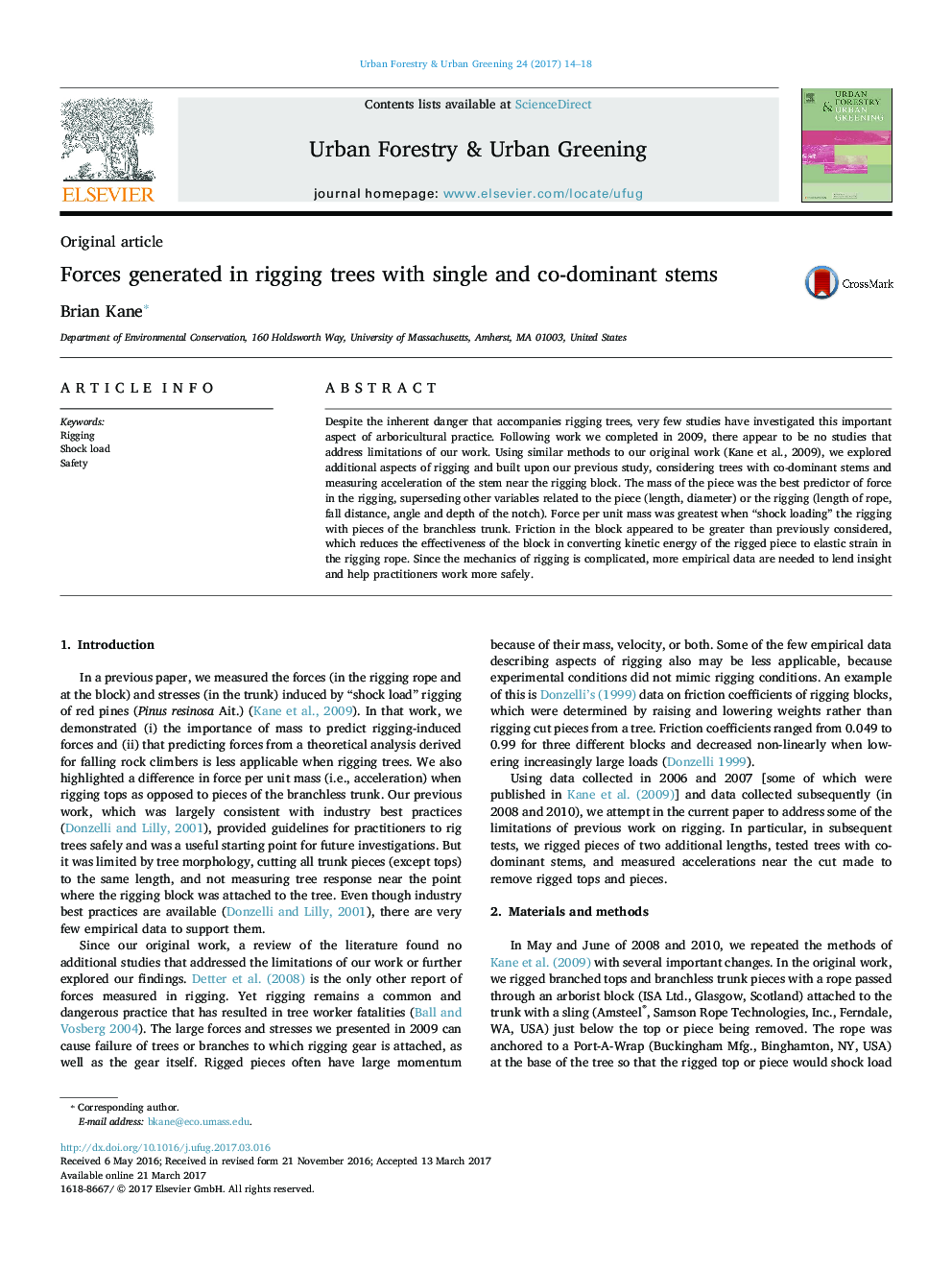| Article ID | Journal | Published Year | Pages | File Type |
|---|---|---|---|---|
| 4760007 | Urban Forestry & Urban Greening | 2017 | 5 Pages |
Despite the inherent danger that accompanies rigging trees, very few studies have investigated this important aspect of arboricultural practice. Following work we completed in 2009, there appear to be no studies that address limitations of our work. Using similar methods to our original work (Kane et al., 2009), we explored additional aspects of rigging and built upon our previous study, considering trees with co-dominant stems and measuring acceleration of the stem near the rigging block. The mass of the piece was the best predictor of force in the rigging, superseding other variables related to the piece (length, diameter) or the rigging (length of rope, fall distance, angle and depth of the notch). Force per unit mass was greatest when “shock loading” the rigging with pieces of the branchless trunk. Friction in the block appeared to be greater than previously considered, which reduces the effectiveness of the block in converting kinetic energy of the rigged piece to elastic strain in the rigging rope. Since the mechanics of rigging is complicated, more empirical data are needed to lend insight and help practitioners work more safely.
